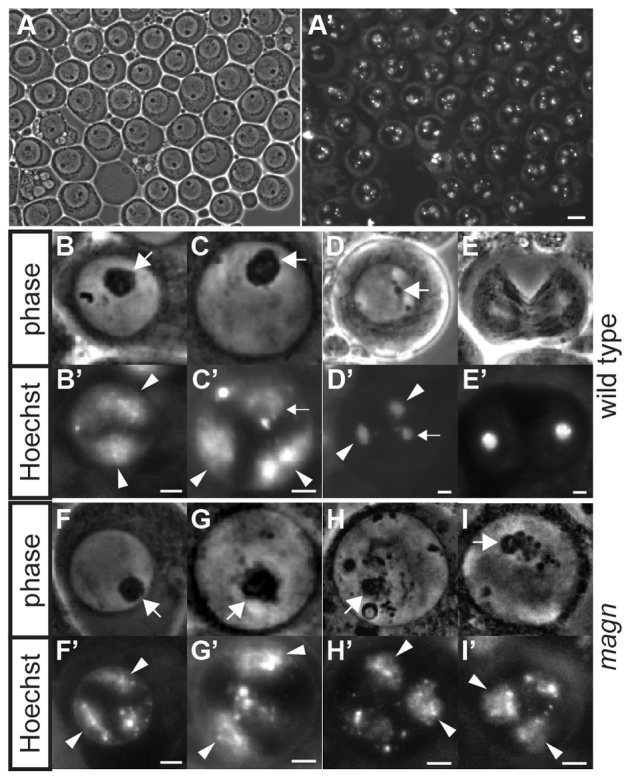Fig. 4.

magn mutant spermatocytes arrest at the G2/M transition with chromatin condensation defects. (A,A′) Arrested magn mature spermatocytes: (A) phase contrast, (A′) Hoechst. (B-I′) Stage-matched spermatocytes from (B-E′) wild-type and (F-I′) magn mutant testes squashes. (B-I) Phase contrast, (B′-I′) Hoechst. Large arrows, nucleolus; small arrows, sex bivalents; arrowheads, condensing autosomal bivalents. (B,B′,F,F′) Wild-type and magn young spermatocytes with autosomal bivalents starting to condense. (C,C′,G,G′) Wild-type and magn mature spermatocytes with autosomal bivalents forming crescents at the nuclear periphery. (D,D′) Wild-type spermatocytes entering meiosis, with condensed bivalents moving towards the middle of the nucleus and nucleolus breaking down. (H-I′) Arrested magn spermatocytes with partially fragmented nucleolus and defectively condensed sphere-shaped chromatin, resembling Magellanic clouds. (E,E′) Wild-type spermatocyte undergoing meiosis I; the corresponding stage was never observed in magn mutant testes. Scale bars: 10 μm in A,A′; 2 μm in B-I′.
